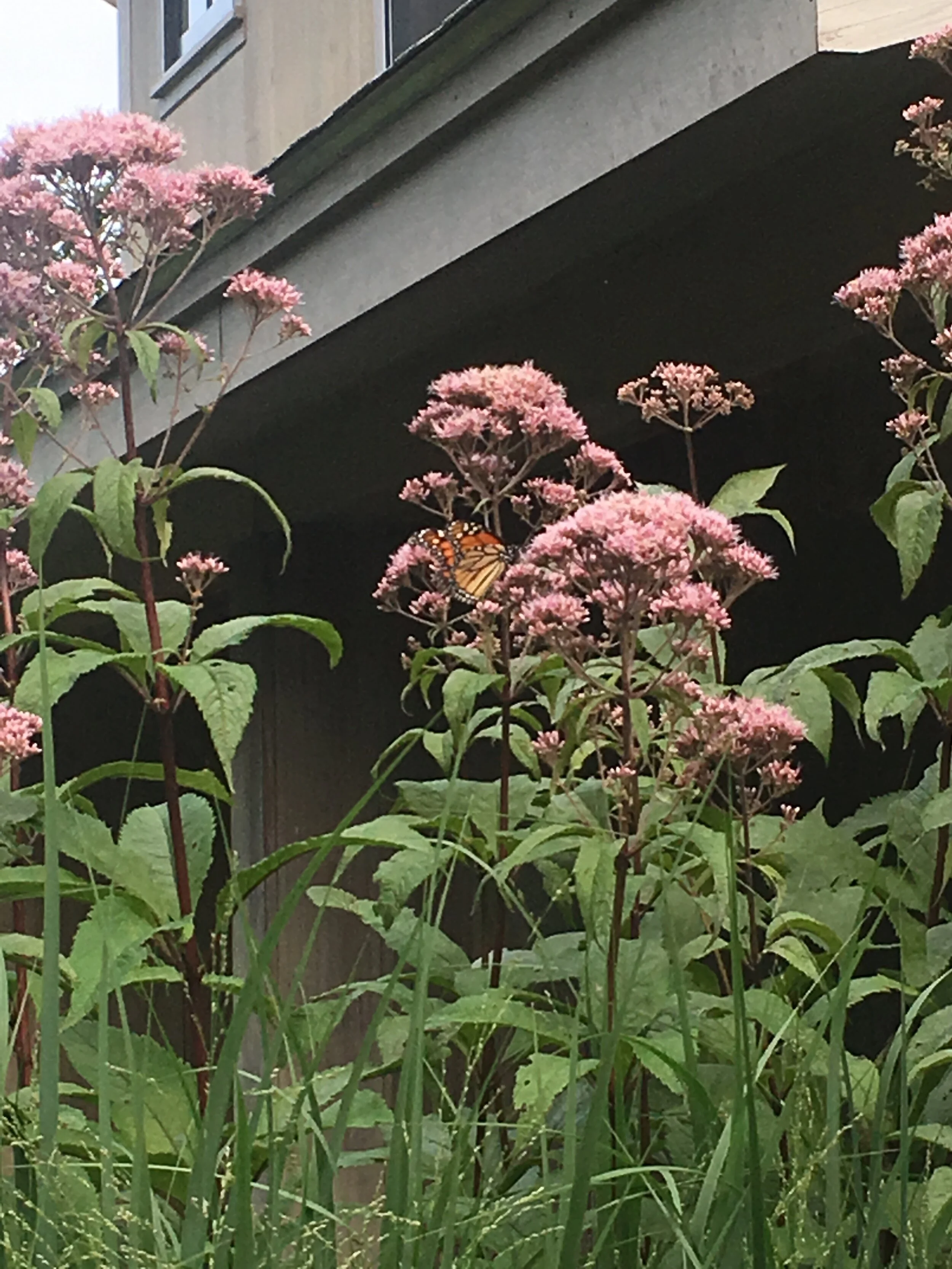Doug Tallamy speaks to an overflow crowd at Harvard University’s Science Center on February 5th.
With headlines proclaiming the latest environmental disaster—the insect apocalypse, the loss of three billion birds—it is easy to feel hopeless about our ability to reverse this trend.
But anyone who owns land has the power to make a real difference when it comes to supporting our increasingly periled wildlife, says Doug Tallamy, a professor at the University of Delaware and author of several books on the benefits of gardening with native plants.
“Each of us has the power and the responsibility to fix barren landscapes,” Tallamy told a large crowd at Harvard University’s Science Center in Cambridge. “Each of us here is nature’s best hope.”
Tallamy appeared as part of the Evenings with Experts lectures organized by Grow Native Massachusetts. The lecture attracted a larger than usual audience, overflowing the 500-seat lecture hall and requiring many to stand or sit on the steps.
Tallamy has just released his latest book, Nature’s Best Hope, which offers homeowners a blueprint for supporting native wildlife. Tallemy sees a great opportunity to restore wildlife habitat by using native plants in our private landscapes, which together constitute 83 percent of land in this country.
In general, native plants support other native species more effectively than non-native plants because they have coevolved with native insects and other wildlife for centuries. Many of our native plants are crucial to the survival of native insects as most insects are specialists, meaning they rely on a small number of plant species for survival. Tallemy said that 90% of all insect species can eat plants in only three or fewer families and most can tolerate only a few closely related species.
Tallamy cited several examples of the transformation that occurs when planting native plants. One example he cited, the High Line in New York City, has employed a large number of native plants in its design, taking its inspiration from what was naturally occurring on the abandoned railroad tracks the park was built upon. The result is a beautiful park that is one of the biggest tourist attractions in New York City.
Tallamy recalled his surprise when visiting the park in 2014, a time when the monarch population was at its lowest, and seeing numerous pollinators, including two monarch butterflies, visit an Asclepias tuberosa (butterfly weed).
Tallamy adds: “If we can create life in the middle of the biggest, most inhospitable cities in the world with thoughtful planting of productive native plants, we can do it pretty much anywhere.”
The garden oasis that is The High Line in New York City
Tallamy cited a few simple steps that homeowners can take to improve biodiversity and support local wildlife.
Shrink the lawn
Tallamy said replacing half of our lawns with native plants would create a “homegrown national park” 20 million acres in size.
Plant keystone native plants
Keystone plants are those native plants that support the largest number of insects. Tallamy worked with the National Wildlife Federation to develop a tool that helps homeowners to identify the most productive plant species for their zip code. The tool can be found here.
For eastern Massachusetts, the most productive species include oaks, cherries, willows, birch, goldenrod, wild strawberry, asters, Joe Pye weed and sunflowers. I have personally used many of the plants on this list and can attest to their success in attracting pollinators. In the garden on Martha’s Vineyard below, Joe Pye weed is covered with butterflies throughout the six weeks it is in bloom during the summer. Joe Pye weed also serves as a caterpillar host plant for 31 species of butterflies and moths.
Turn off the lights
Outdoor lights kill billions of insects each year. Insects are attracted to the light, expend all of their energy and become susceptible to predators. Tallamy recommends using motion detectors and yellow LED light bulbs on all outdoor lights.
Plant under trees
Planting native ground cover plants under trees allows caterpillars to complete their development. Caterpillars often fall from trees and die because lawns and hardscape are inhospitable to their survival. There are numerous native ground covers that are suited to being planted under trees, including Asarum canadense (wild ginger), Waldsteinia fragarioides (barren strawberry). Fragaria virginiana, (common strawberry), Chrysogonum virginianum (golden star), Eurybia divaricata (white wood aster) and many of the native ferns such as Athyrium filix-femina (lady fern) and Thelypteris noveboracensis (New York fern).
Native ground covers (from left to right): Asarum canadense, Waldsteinia fragarioides, Eurybia divaricata and Athyrium filix-femina.
With these relatively easy steps, Tallamy says, we can create ecosystems on our private properties, which would help to reverse the trend of wildlife decline. Rather than leaving earth stewardship up to a few specialists, this approach empowers all of us to be part of the solution.
In talking to colleagues after the lecture, most agreed that customers are increasingly receptive to using native plants in their gardens. Landscape designers have a unique opportunity to continue to shape the public’s perceptions and attitudes towards native plants.
I am not suggesting that using native plants requires a sacrifice. Far from it. Tallemy compared our love affair with non-native plants to the American diet filled with food that will kill us. I defy anyone to watch the sun filter through the amaranthine blooms of Joe Pye weed and feel hungry for anything else.




























